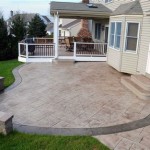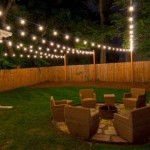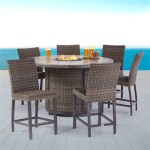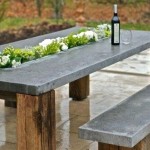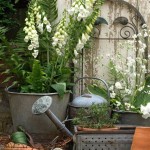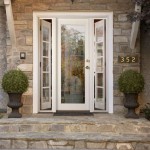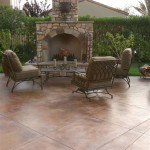Bring The Serene Beauty Of Waterfalls To Your Patios
Water features, particularly waterfalls, offer a unique opportunity to transform ordinary patios into tranquil and aesthetically pleasing outdoor living spaces. The incorporation of a waterfall introduces visual interest, a soothing auditory element, and can contribute to an overall sense of relaxation and well-being. Understanding the various types of patio waterfalls, the factors influencing their design and installation, and the ongoing maintenance requirements are crucial for a successful implementation of this appealing landscape feature.
Types of Patio Waterfalls
Numerous types of waterfalls can be adapted for patio settings, each possessing distinct characteristics and visual appeals. The selection of a particular type hinges on factors such as the available space, budget, desired aesthetic, and the surrounding landscape architecture. Differentiating among these types allows for a more informed decision-making process.
Tiered Waterfalls: Tiered waterfalls are characterized by water cascading down multiple levels or platforms. These structures are commonly constructed from natural stone, pre-fabricated modular units, or a combination of materials. The tiered design creates a visually engaging effect, with the water flowing and churning as it descends. The number of tiers can be customized to suit the available height and desired complexity. Tiered waterfalls are suitable for both small and large patios, depending on the scale of the structure.
Rock Waterfalls: Rock waterfalls aim to mimic natural waterfall formations found in nature. This type typically incorporates a variety of rocks of different sizes and shapes, strategically arranged to create a realistic and organic appearance. The water flows between and over the rocks, creating a visually dynamic and texturally rich feature. Rock waterfalls can be designed to appear as a natural spring emerging from a hillside or as a cascade flowing down a rocky outcrop. The selection of rock types significantly impacts the overall aesthetic; considerations include color, texture, and geological origin.
Wall Waterfalls: Wall waterfalls, also known as weeping walls, involve water flowing down a vertical surface, such as a stone wall, a concrete slab, or a metal panel. The water can be released directly from the top of the wall or can emanate from a series of strategically placed nozzles. The surface material plays a crucial role in the visual impact; rough textures create a more dynamic and textured flow, while smooth surfaces produce a sleek and contemporary aesthetic. Wall waterfalls are well-suited for smaller patios or those with limited horizontal space, as they utilize vertical space efficiently. They are often integrated into existing walls or fences to create a focal point.
Pondless Waterfalls: Pondless waterfalls eliminate the need for a visible pool of water at the base of the waterfall. Instead, the water flows into a hidden reservoir, which is typically located underground and covered with gravel or decorative stones. This design feature offers several advantages, including reduced maintenance requirements, improved safety (particularly for households with young children or pets), and a more naturalistic aesthetic. The water is pumped from the reservoir back to the top of the waterfall, creating a continuous cycle. Pondless waterfalls are versatile and can be adapted to various patio sizes and styles.
Factors Influencing Patio Waterfall Design and Installation
The successful implementation of a patio waterfall requires careful consideration of several key factors. These include the site conditions, the choice of materials, the plumbing and electrical requirements, and the overall design integration with the existing landscape. A comprehensive understanding of these factors is essential for ensuring a visually appealing, functional, and sustainable waterfall feature.
Site Assessment: A thorough site assessment is the first step in the design process. This involves evaluating the available space, the soil conditions, the existing vegetation, and the sun exposure. The size and shape of the patio will dictate the scale and configuration of the waterfall. Soil conditions are relevant for determining the foundation requirements and drainage considerations. Existing vegetation may need to be relocated or incorporated into the design. Sun exposure will influence the types of plants that can be used around the waterfall and the potential for algae growth.
Material Selection: The choice of materials significantly impacts the aesthetic appeal and durability of the waterfall. Natural stone, such as granite, limestone, and slate, offers a timeless and organic look. Pre-fabricated modular units provide a more uniform and consistent appearance. Concrete can be used to create custom shapes and textures. Other materials, such as metal, glass, or even bamboo, can be incorporated to create unique and contemporary designs. The selection of materials should consider factors such as weather resistance, maintenance requirements, and cost.
Plumbing and Electrical Considerations: Waterfalls require a plumbing system to circulate the water and an electrical system to power the pump. The plumbing system should be sized appropriately to provide adequate water flow and pressure. The electrical system should be installed by a qualified electrician and should comply with all local codes and regulations. Safety is a paramount concern; ground fault circuit interrupters (GFCIs) should be used to protect against electrical hazards. The placement of the pump is also critical; it should be easily accessible for maintenance and should be protected from the elements.
Design Integration: The waterfall should be integrated seamlessly into the overall landscape design. This involves considering the style of the house, the existing landscaping, and the desired aesthetic. The waterfall should complement the surrounding elements and should not appear out of place. The use of plants, rocks, and other decorative features can help to blend the waterfall into the landscape and create a cohesive and harmonious design. Lighting can also be used to enhance the visual impact of the waterfall, particularly at night.
Maintaining the Beauty and Functionality of Patio Waterfalls
Regular maintenance is essential for preserving the aesthetic appeal and operational efficiency of patio waterfalls. Tasks such as cleaning, water level monitoring, pump maintenance, and algae control are critical for preventing problems and ensuring that the waterfall continues to function properly. Neglecting these maintenance tasks can lead to reduced water flow, unsightly algae growth, and potential damage to the pump and other components.
Cleaning and Debris Removal: Regular cleaning helps to remove debris, such as leaves, twigs, and sediment, which can accumulate in the waterfall and affect water flow. A soft-bristled brush can be used to clean the rocks and other surfaces. A net or skimmer can be used to remove floating debris from the water. The frequency of cleaning will depend on the surrounding environment and the amount of debris that accumulates.
Water Level Monitoring: Monitoring the water level is important for ensuring that the pump is submerged and operating properly. Low water levels can cause the pump to overheat and fail. Water levels can be adjusted by adding water as needed. Leaks in the plumbing system can also cause water levels to drop; these should be repaired promptly.
Pump Maintenance: The pump is the heart of the waterfall system and requires regular maintenance to ensure optimal performance. The pump should be inspected regularly for signs of wear and tear. The pump filter should be cleaned or replaced as needed. The pump impeller should be checked for obstructions. The pump should be lubricated according to the manufacturer's instructions. If the pump is not working properly, it should be repaired or replaced.
Algae Control: Algae growth can be a common problem in waterfalls, particularly in sunny locations. Algae can make the water appear murky and can also clog the plumbing system. Algae growth can be controlled by using algaecides or by introducing beneficial bacteria that compete with algae for nutrients. Shade can also help to reduce algae growth. Regular cleaning and maintenance can also help to prevent algae growth.
By carefully planning the design, selecting appropriate materials, and implementing a proactive maintenance schedule, homeowners can successfully incorporate the serene beauty of waterfalls into their patio spaces, creating an oasis of tranquility and visual appeal.

25 Backyard Waterfall Ideas For A Serene Outdoor Oasis

25 Backyard Waterfall Ideas For A Serene Outdoor Oasis

25 Backyard Waterfall Ideas For A Serene Outdoor Oasis

25 Backyard Waterfall Ideas For A Serene Outdoor Oasis

25 Backyard Waterfall Ideas For A Serene Outdoor Oasis

5 Compelling Reasons To Add A Waterfall Your Backyard

How To Enhance Your Landscape With Tranquil Water Features 7 Small Pond Waterfall Ideas Struck Corp

Add Calm And Serenity To Your Outdoor Space With A Water Feature

25 Small Pond Ideas With Waterfalls To Inspire You

25 Backyard Waterfall Ideas For A Serene Outdoor Oasis
Related Posts

